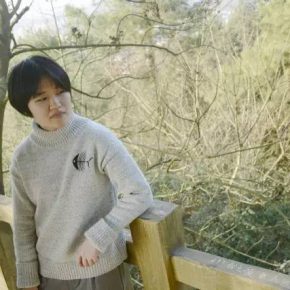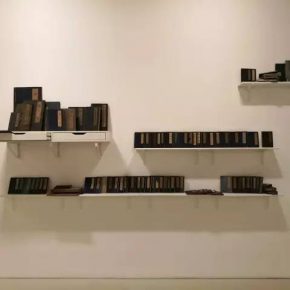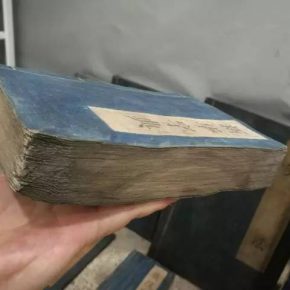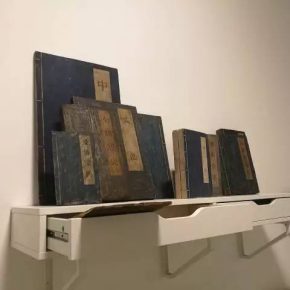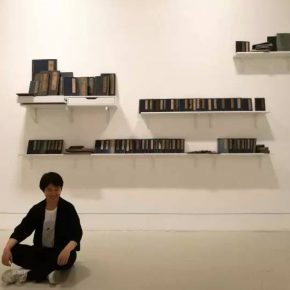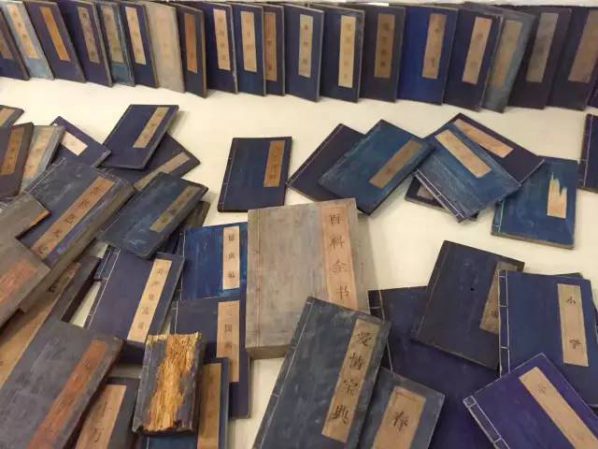
After seeing my work, the audience’s reaction is very interesting and amusing.
A child touched my book and with uncertainty said, “Why can these books not be opened?”; a girl passing my work, clutched her mouth and smiled; a young man curled his lips and with distaste: “Antique”, and then hurried away.
When people talk about art, they always have some simplified views, for example: art “focusing on form”, art is “funny”, contemporary art “focusing on concept”, and traditional art focuses on “beauty”, etc. In fact, this is not the real way to understand artistic charm. If we calmly know the specific works and art history, it is easy to find: art is art precisely because it is not framed by any opinion, and art is the opposite of logic in a sense. Excellent art repeatedly violates the “Law of Contradiction” and “Law of Identity”, the A and non-A are naturally mix together, to construct a faintly familiar but refreshing wonderful tension, both conflicting and coordined, refreshing people’s numb senses, to activate people to think and feel, to lead people to a new possibility, so that they will not become a machine in the rigor of technical and commercial reproduction.
So that, it might be very emotional, but it also frightens people to think of their own “common sense”; it can be very singular with one glance, but people can see the interesting richness through an observation using a magnifying glass; it can have a paradoxical “traditional” taste, while it is so bold and contemporary in details.
It is the contradiction, conflict, implication and tension of “A Book Can’t Be Opened”, the latest work by Tang Moxi. Let’s try to “open it”:
1 “To be” or “Not to be”.
It is a famous question that appears in the well-known play “Hamlet”, which entangled the Danish prince and is a welcome complexity in art. It is interesting that when many viewers pass by Tang Moxi’s works, they naturally ignore them, because they look like “books”, and more specifically they are like the nondescript “ancient books” which are modeled after an antique Chinese thread-bound book, browsing from left to right, but printed with simplified Chinese characters, what is the difference? – On the surface, this “ignoring” is depressing, however, if it is not the “ignoring” that really happens as the exhibition space produces “ignoring” because of “to be”, people who will not be surprised by the “not to be” as revealed by the work. They are books, which are industriously disguised to be books by Tang, with the size, proportion, color and layout of a book, they even use the texture of wood to create the old and curly features of old and ancient books, the spine is pressed using binding thread, the mottled effect of broken pages ... they are so realistic that people want to pick them up and open them. However, when you pick them up, you find that the books can’t be opened, then you are “cheated”.
2 Feelings and Thoughts.
But it does not focus on shocking. Surprise and “deception” is not the key to art. It is also a common misunderstanding of contemporary art that art is satisfied by “surprise”. In fact, the sensory “novelty” is only the beginning of art, rather than the purpose of art. The novelty starts people thinking, which is difficult. Tang Moxi’s works catch the natural relationship between the wood and the book, so that this vortex of “to be” and “not to be” is heavily entangled. If you say her work is not a “book”, it seems to be fault, because a book is wooden, while Tang Moxi’s works are also wooden, they are both made up of the same material. It surprises us : Isn’t Tang Moxi’s work really a “book”? Is the thing that we usually call the “book” really a book? In the end, what is a book? Where is the book?
In the era of e-books, we are more likely to understand the problem that the book is neither in a bamboo slip or sheep skin, nor in the wood pulp, the book is like a ghost that has a vivid appearance with the material; however, the book is indeed in my hands, holding it, feeling the texture, luster and the sound of flipping a page, reading is not a pure abstract information entry activity, but a comprehensive activity with the glory of human nature. Tang Moxi’s “book” brings us to the present state of life entangled with spirit and material from the era of electronic reading, which makes us think that: pure spirit is not satisfied; the book should be a thing of weight, fragrance, vocalizing.
3 Simple and Rich.
However, if we are only allowed to reflect on the “book”, people will soon be tired of all these things.
Successful art has a trick, that is to offer clear and decisive simplification, while continuing to quietly inject richness behind this simplification. Cezanne’s apples, Morandi’s bottles, Rodin’s hand, Van Gogh’s sunflowers and wheatfields and Rembrandt’s portraits ... all become the “distinguishing features” that can be recognized at a glance. Only when an artist has this “distinguishing feature”, can he/she be self-reliant and become one. However, this simplification is not equal to being monotonous, while each piece is a unique “variation” on the same theme.
Tang Moxi’s “A Book Can’t Be Opened” is a series of works, and the majority of audiences say that, “It is a group of wooden books”. However, things are not so simple, for she has tried her best to finish each piece, and her “books” include both the traditional “Doctrine of Mean”, “Tiangong Kaiwu”, “Shishuo Xinyu”, and modern “Encyclopedia”, “The Records about Insects”, as well as many secretive weapons: “Not-Tao Te Ching”, “The Little Learning”… many books can’t be both opened on a material level or a spiritual level, which is the “book that does not exist” – but, does it really not exist?
– Yang Zhen, Ph.D., art critic, Associate Professor
How to open “A Book Can’t Be Opened”? – Three Modes of Viewing Tang Moxi’s Works
Text and Photo by Tang Moxi, edited by Zhong Yuwei/CAFA ART INFO
Translated by Chen Peihua and edited by Sue/CAFA ART INFO


